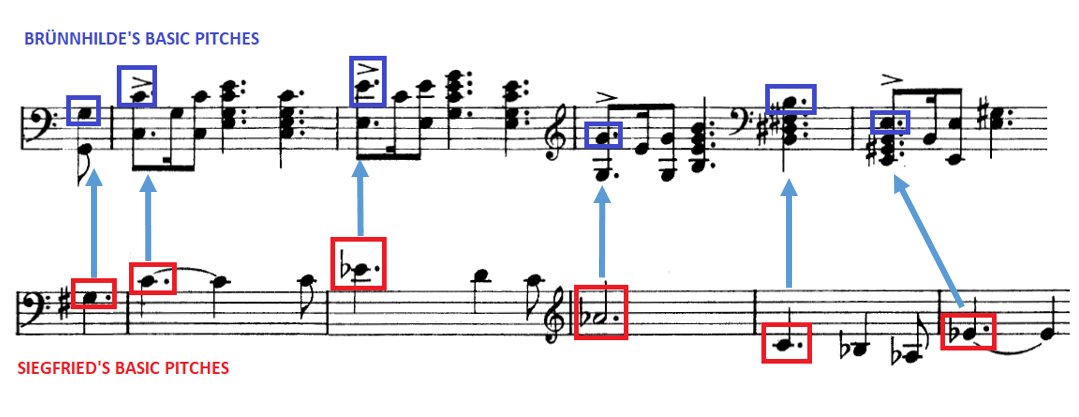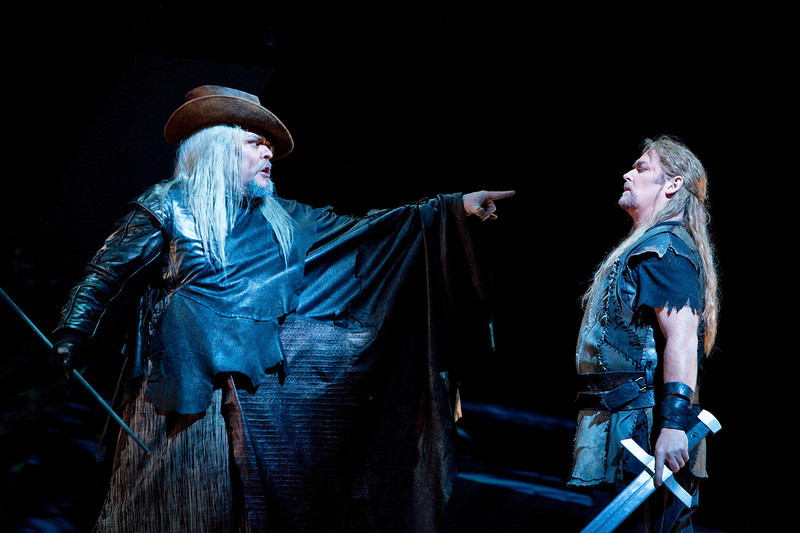
#WednesdayWagner 'Siegfried! Siegfried! Sieh! Selig grüßt dich dein Weib!' Welcome to another pill of Wagnerian composition tips. Today: BRÜNNHILDE AND SIEGFRIED RELATIONSHIP! (in a musical way, of course).
#TwitterCultural #LecturaRecomendada #TeamWagner
#TwitterCultural #LecturaRecomendada #TeamWagner
#WednesdayWagner I assume that everyone knows that Brünnhilde is one of Wotan's daughters and Siegfried is Wotan's grandson, so Brünnhilde is the aunt of Siegfried. They will also became lovers (yes, like Daenerys and Jon Snow, for those of you who are GoT fans)
#TwitterCultural
#TwitterCultural
#WednesdayWagner Is this relationship translated (or highlighted) to the music substrate? I think so. Let's begin with the first appearance of Brünnhilde (in 'Die Walküre' act 2). The motive linked with her starts at 1.53 and 2.07
#TwitterCultural
#TwitterCultural
#WednesdayWagner As you can see below, the theme starts in C Major but ends in E Major. A modulation by ascending major 3rd appears (typical of Romantic era, from Beethoven onwards and of course including Mendelssohn, Schubert, Brahms, etc.)
#TwitterCultural
#TwitterCultural

#WednesdayWagner Let's move to the first appearance of Siegfried, which is in 'Die Walküre' act 2. OK, he does not appear there BUT he is mentioned and the music carries one of his leitmotifs (from 16.03 to 16.20)
#TwitterCultural
#TwitterCultural
#WednesdayWagner Now, as you can see below, the music starts in C Major and after 2 chords it moves to Ab Major, which means a modulation by descending major 3rd. It's the opposite movement as Brünnhilde appearance!
#TwitterCultural
#TwitterCultural

#WednesdayWagner You can say "OK Richard, but after this Ab Major, music goes to Eb Major". That's true. But let's see what happens right after that: same motive, but now from Eb Major to B Major. Descending major 3rd!
#TwitterCultural
#TwitterCultural

#WednesdayWagner If we look together at these movements, we find that moving by major 3rds results in a "closed circle": C - E - Ab - C - E - Ab ... The same happens with 3 other sets of pitches, each one forming an Augmented 5th chord
#TwitterCultural
#TwitterCultural

#WednesdayWagner The funny thing is that the well known 'Hojotojo' leitmotif, sung by Brünnhilde and the valkyries, is based on ... Yes! An Augmented 5th chord: G-B-D#. Isn't it wonderful?
#TwitterCultural
#TwitterCultural

#WednesdayWagner But there's always more! Brünnhilde's melodic pattern is formed by arpeggiate figures on each chord. If we take only the basic pitches, we obtain the following (in two steps)
#TwitterCultural
#TwitterCultural

#WednesdayWagner We can do the same with Siegfried's melodic pattern, obtaining the basic pitches shown below
#TwitterCultural
#TwitterCultural

#WednesdayWagner Now, comparing both Brünnhilde's and Siegfried's essential pitches, we can see that ... They are almost the same! Wow!!! Just a two minor modifications to adjust to the different destination keys (E Major, Ab Major). Did it happen by chance?
#TwitterCultural
#TwitterCultural

#WednesdayWagner Of course not! Brünnhilde and Siegfried are not only relatives (aunt and nephew), but they also share lots of musical features that, maybe at first listening are not relevant, but contribute to generate a superb coherence in the whole Tetralogy
#TwitterCultural
#TwitterCultural
@threadreaderapp unroll
• • •
Missing some Tweet in this thread? You can try to
force a refresh





